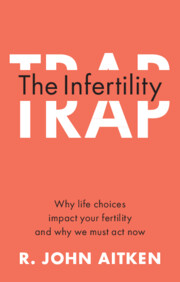Chapter 6
Published online by Cambridge University Press: 05 May 2022
Summary
Why are men infertile?Oxidative stress is one of the major causes of male infertility can be induced by a wide range of biological (age), clinical (varicocele), lifestyle (diet) and environmental (electromagnetic radiation and chemical pollutants) factors. Oxidative stress may impact all aspects of spermatogenesis but is particularly damaging when it is experienced late in the spermatogenic process when male germ cells are differentiating into spermatozoa and are rapidly losing their capacity for DNA repair. An immediate consequence of oxidative stress is that spermatozoa lose their capacity for fertilization, thereby generating a state of infertility/subfertility. However lower levels of oxidative stress can result in spermatozoa that are still competent to fertilize ova but are carrying significant quantities of oxidative DNA damage. If this damage occurs early in spermatogenesis, it can result in a mutation that will be carried to the ovum at the moment of fertilization. Alternatively, if the oxidative DNA damage occurs late in spermatogenesis, it can become fixed as a mutation following fertilization as a result of defective DNA repair in the oocyte. Such DNA damage may be responsible for a range of congenital disorders seen in children, particularly neuropsychiatric conditions such as autism and, critically, infertility.
Keywords
- Type
- Chapter
- Information
- The Infertility TrapWhy life choices impact your fertility and why we must act now, pp. 203 - 237Publisher: Cambridge University PressPrint publication year: 2022



